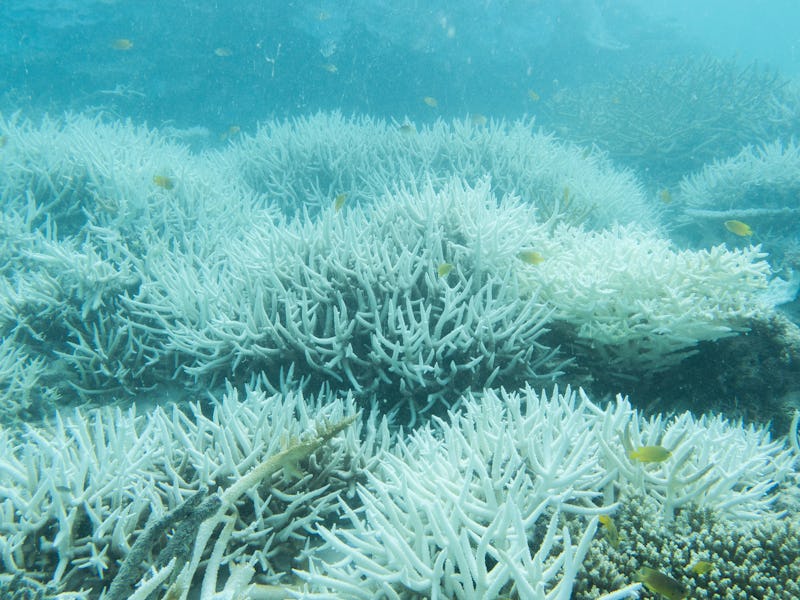The Hottest Ocean Temperatures In 400 Years Are Putting The Great Barrier Reef in Extreme Peril
These multi-centenarian creatures could be gone this generation.

Scientists are listening to a mayday from the Great Barrier Reef. The message is bleak.
In a new study, a team analyzed records of coral skeletons. Their chemical signatures hint at the past temperature of the Coral Sea, off Australia’s northeastern coast, where the coral has lived for centuries. Researchers pulled modern sea surface data and ran climate analyses to paint a fuller picture of the last half millenia.
The findings strongly suggest reef-building corals haven’t experienced anything like the recent sea surface temperatures in at least the past 400 years— and the accompanying devastation of mass coral bleaching is bleak. These multi-centenarian creatures could be gone this generation, which places into peril the million creatures that live amongst them.
The coral is the canary in the coal mine of global warming
Researchers say human-driven climate change is the culprit. “Climate model analysis confirms that human influence on the climate system is responsible for the rapid warming in recent decades,” the authors write in their paper, published Wednesday in the journal Nature.
The Great Barrier Reef’s demise matters worldwide. It’s highly sensitive to the subtlest increase in sea temperature. The coral is the canary in the coal mine of global warming, Helen McGregor, professor at the University of Wollongong and paper co-author, told reporters on Monday.
“We must meet our Paris Agreement targets. It’s just so clear to me that that’s what needs to happen. No ‘if’s, ‘but’s, ‘maybe’s, fake targets. And make them soon,” she added.
Coral expels the algae essential to its survival from its tissues when it is stressed, such as during heat extremes. According to the paper, if global warming escalates, coral bleaching could happen every year.
Coral expels the algae essential to its survival from its tissues when it is stressed, such as during heat extremes. The Coral Sea’s three warmest years out of the last four centuries all happened in just the last decade: 2017, 2020 and 2024. According to the paper, if global warming escalates, coral bleaching could happen every year.
“A lot of us are sitting at the edge of our seats, thinking, is this gone in 50 years? A hundred years? The children will not see the same things that we saw,” Ove Hoegh-Guldberg, paper co-author and professor at the University of Queensland in Brisbane, Australia, told reporters.
Researchers reconstructed the sea surface temperatures for January to March historically. As varieties of coral grow over the course of centuries, they record chemical signatures in their skeletons. The ratio of strontium calcium and the oxygen isotope, inside the coral cores, appear in past records. Known as paleo thermometers, the signatures reflect the temperature of the water at the time the coral grows. From this, the team created a statistical model to reconstruct the past. “It allows us to quantify how extreme those recent warming events have been,” Ben Henley, lead paper author and research fellow at the University of Wollongong in Australia, told reporters.
Great Barrier Reef coral is now getting stressed three or fourfold times greater than it has in the past, the team said. It puts at risk the mesmerizing animals that live there — as well as the ones not yet discovered. “There might be as many as a million different species of organisms living on or around the coral reef. And half of those, we don’t know their names. It’s this slew of biodiversity opportunity,” Ove Hoegh-Guldberg said.
The vulnerable coral is sending out an SOS to the rest of the planet. Left unheard, the authors said our generation will lose this natural wonder.